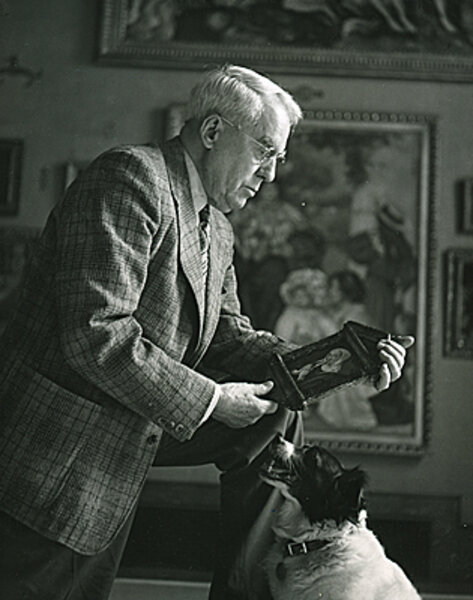The Art of the Steal: movie review
Loading...
No less an eminence than Henri Matisse once commented that The Barnes Foundation is "the only sane place to see art in America." Established in 1922 by the millionaire Dr. Albert C. Barnes, the privately held foundation, housed in a 12-acre jewel-box-like arboretum in leafy Lower Merion, Pa., five miles outside Philadelphia, contains perhaps the greatest concentration of post-Impressionist and early Modern masterpieces in the world – 181 Renoirs, 69 Cézannes, 59 Matisses, 46 Picassos, 16 Modiglianis, 7 Van Goghs, to name just a few.
The combined value of these paintings, not to mention the Barnes's extensive collection of African art; old masters; ancient Egyptian, Greek, and Roman art; medieval manuscripts; and American paintings; is more than $25 billion.
The documentary "The Art of the Steal," directed by Don Argott, chronicles how the foundation, since Barnes's death in 1951, has been undermined by Pennsylvania power brokers. Barnes's will stipulated that the paintings would never be loaned, sold, or removed from the building. Until Barnes's protégée, Violette de Mazia, died in 1988, this was pretty much the status quo. Subsequently, through a series of quasi-Machiavellian machinations, Barnes's will has been whittled down. The collection, despite numerous protests, is now scheduled to be removed from Merion and installed in 2012 in a new facility in downtown Philadelphia.
How did this come to pass? The filmmakers characterize the power brokers – who include Gov. Edward Rendell, former foundation president Richard Glanton, the late Walter Annenberg, and the Pew Foundation – as the bad guys. Good guys include a pageant of angry art critics and historians, NAACP chairman and Barnes family friend Julian Bond, and former foundation members and students.
The film's good versus bad scenario is, while understandable, too simplistic. To comprehend the dynamics of the situation, one needs to go back to the foundation's origins. Barnes, who grew up working-class, bought post-Impressionist art at a time when the major American museums were not terribly interested in it. The initial showings of Barnes's paintings were met with disdain by Philadelphia's cultural bigwigs, who regarded his collection as "horrible, debased art."
In retaliation, Barnes created his own museum, intending the foundation to be primarily an educational institution, with access to the paintings by appointment only. As a further snub, Barnes stipulated in his will that his collection would be controlled upon his death by Lincoln University, a small African-American college in Pennsylvania, rather than, say, the Philadelphia Museum of Art, which he despised. (This control was, of course, wrested away from Lincoln.)
It's tempting to imagine what might have happened if, back in the day, the reigning pooh-bahs had celebrated rather than trashed the collection. Although the foundation is, as everyone concedes, one of the great cultural entities in America, the reality is that, under the terms of Barnes's will, very few people had access to its paintings. (Traveling tours of the collection, officially proscribed, have been minimal.) Imagine if there was a collection of works by Shakespeare, or symphonies by Mozart, that could be experienced only in a single location after an interminable wait, if at all?
I can agree that the power brokers in this scenario, who effectively broke Barnes's will, have far more interest in tourism than in masterpieces. But casting this story as a battle between the elites and the philistines mischaracterizes the situation. By making the art publicly available in the downtown location (which will recreate the way the art was displayed in the foundation), and by expanding its touring possibilities, these glories will be seen by generations otherwise unable to do so. Is that so horrible? Grade: B+ (Unrated.)
More Monitor movie reviews





